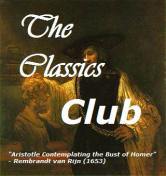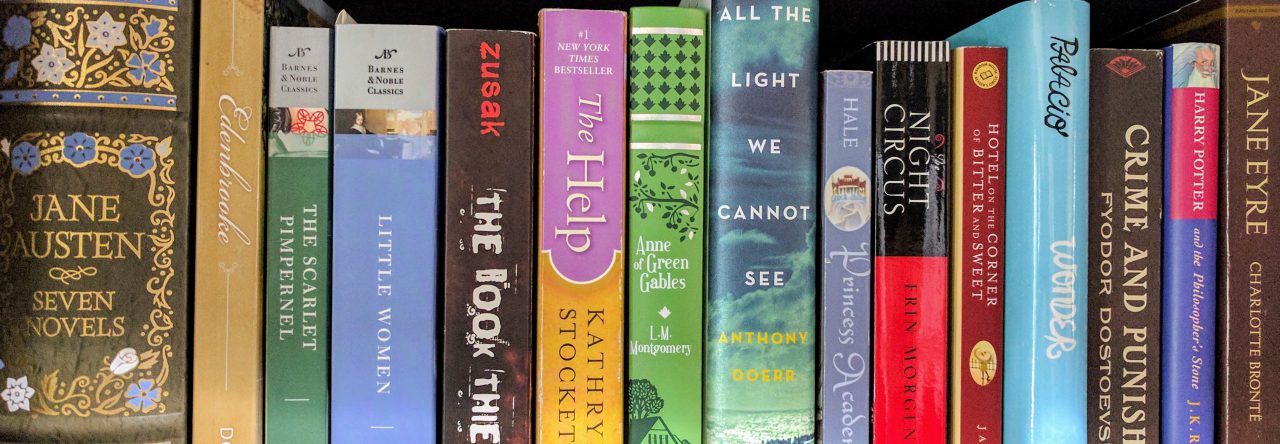Hi everyone! Hope you’re having a great Friday night. We spent the night starting our Christmas shopping. And you better believe we turned on Christmas music this morning. I am so excited for Christmas this year!
Tonight I am excited to share some thoughts on another book finished for The Classics Club. Just a short shout out to this club and its organizers. I love reading more classics and talking about them with these fabulous, intelligent people! Today, I am talking a little bit about Aesop’s Fables.
By way of introduction, Aesop’s Fables is a collection of short stories mainly with animals as characters that portray a variety of morals to the reader. They were believed to have started by a slave and storyteller named Aesop who lived in ancient Greece. The stories were first passed down orally and later written down and then translated. I listened to some of these on audiobook before getting the complete set from the library and powering through it in a few days.
Initial thoughts:
- I did not realize how long this collection was–just under 250 pages in the edition I read. I thought it was instructive and worthwhile reading the full collection in a short amount of time. But it’s not something I plan to repeat.
- I was surprised how familiar many of the fables and the morals of the fables were. The tortoise and the hare, the boy who cried wolf, and several others were definitely familiar.
- My copy from the library had fabulous illustrations in it, and I recommend reading a similar copy. I think the pictures add to the story and helped me visualize what was happening more easily (especially when I felt less invested in reading).

Aesop’s Fables is a collection of short anecdotes that also share a moral or lesson. Goodreads summarizes, “The fables of Aesop have become one of the most enduring traditions of European culture, ever since they were first written down nearly two millennia ago. Aesop was reputedly a tongue-tied slave who miraculously received the power of speech; From his legendary storytelling came the collections of prose and verse fables scattered throughout Greek and Roman literature. First published in English by Caxton in 1484, the fables and their morals continue to charm modern readers: Who does not know the story of the tortoise and the hare, or the boy who cried wolf? They are two of the many fables from Aesop, made legendary by time.”
I have not had much interaction with the fable genre and was intrigued by it. A fable, by definition, is a short story that teaches a moral often with animals as characters. These are the epitome of fables. These stories are short–no more than a full page and often a lot less. They are basic–we meet simple characters and overhear basic conversations. And we meet the same sorts of animals in them–lions, foxes, mice, cats, sheep, and others. Additionally, they teach many profound lessons. There is a lot packed into these small stories.
The highlights of these stories are the one line morals that are included at the conclusion of each fable. I wanted to write down most of them to remember for later. Lessons like “slow and steady wins the race” and “don’t count your chickens before they hatch” were familiar to me before I read these. It was fun to see where those phrases come from. It was the morals that made me want to read fables out loud to my husband or share thoughts with friends.
A few favorite morals, many of which were familiar to me before I encountered them in Aesop:
While I found several fables interesting, there were some aspects of the collection that made it difficult to get through and difficult to get invested in. Some of these Fables are brilliant and profound. Some I felt were repetitive and lacking depth. I would sometimes feel like I was reading the same thing several times over, even the morals sounded rather similar sometimes. Perhaps because I read more quickly at the end, I felt they became more repetitive and unexciting. Other times the morals didn’t seem to quite fit with the story told in conjunction with it. These issues were frustrating for me. I think a more curated collection of the best fables with the most profound morals would be more compelling to read.
I definitely appreciate the way Aesop’s Fables can apply to current, modern life. So many of these morals are applicable to how I want to live my life. We can still learn a lot from Aesop. But I think the repetitive nature of the fables and the differing levels of profundity and engagement hinders their effectiveness. That being said, I think the fables are worth reading, especially the most famous ones. But perhaps they are best read in shorter sections or certain fables selected about a certain theme. As a whole, not my favorite for the classics club though.





This is my 18th novel finished for my list with The Classics Club! Check out my full list here. For more info on the club, click here.












Woohoo! Another classic checked off the list! Great job, Jane. I haven’t read Aesop’s Fables in an anthology like this before. It must have been quite an interesting experience! How many fables are there in total? Do you know if that’s a complete collection of the fables?
Personally, I’ve been told the less-well-known fables are less effective sometimes due to translation issues. The great ones are well translated as people have found the best wording over years and years of sharing these fables. But, the less well-known ones are a bit more obscure and given less time and effort to make magical in translation. Do you think that might be the case with this anthology? Or was it something else which made other fables less effective?
LikeLiked by 1 person
Thank you! Making progress! 🙂
I believe this was a complete collection and it was over 200 pages so probably several hundred!
That makes sense on translations of the best fables. I think that was definitely part of my difficulty in getting excited about these. Sometimes they just didn’t really make sense (sounds like a translation issue to me!) Also, I think the fables would be more effective read a few at a time. It’s hard to read so many in a row.
LikeLike
What’s nice about this type of book is that you really don’t HAVE to read it cover to cover. You can pick and choose. You can open the book up in the middle and read for awhile. You can then read a fable at the end of the book. No problem! It’s all good. 🙂
LikeLiked by 1 person
That is so true! And I think it’s designed to be more like that. Definitely full of interesting fables and morals!
LikeLike
I think this was one of Abraham Lincoln’s favorite books. The “united we stand, divided we fall” phrase stands out to me. 🙂
LikeLiked by 1 person
Neat! I didn’t know that. Yes, that one was definitely familiar to me as well 🙂
LikeLike